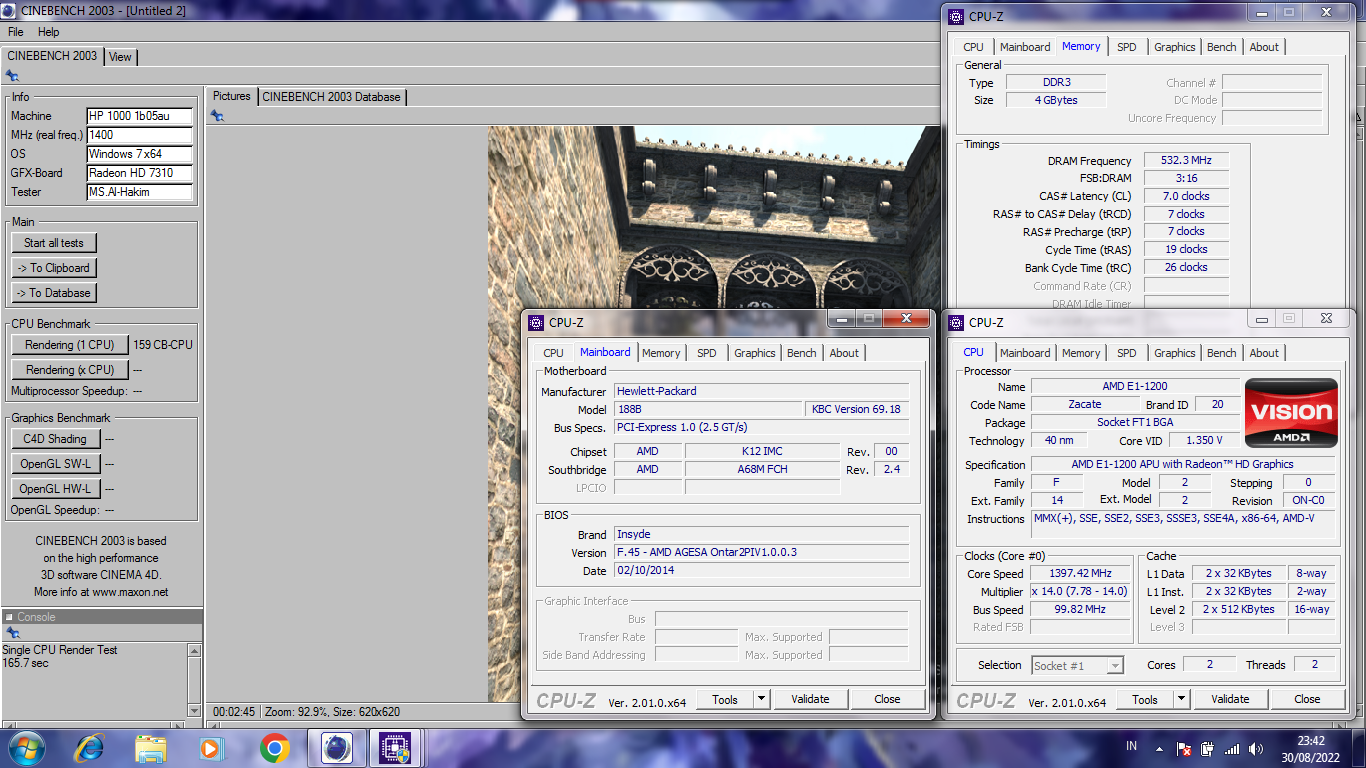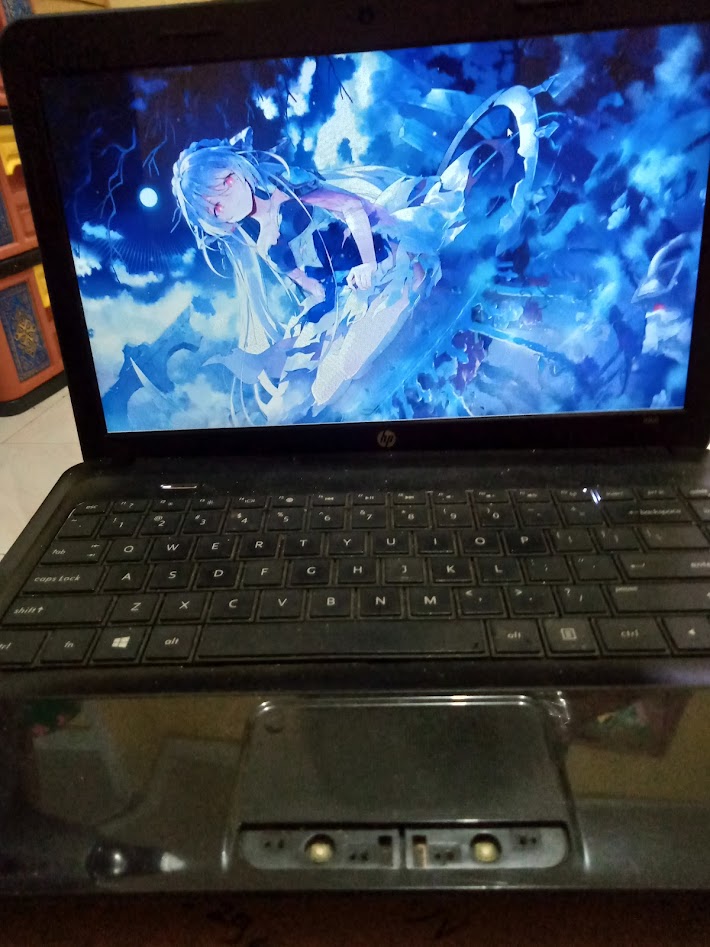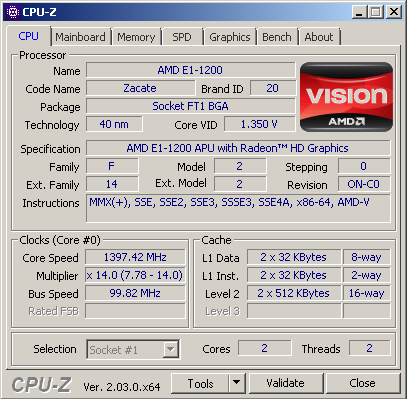Cinebench - 2003 Single Core score 159 CB with a E1-1200
Thursday, 01 January 1970 07:00 | Update at null
Media Gallery
Screenshot

Device, Setup, etc



URL
https://bit.ly/3TrGKvfInformation Detail
Hardware: AMD E1-1200
Specs:CPUID : AMD E1-1200 APU with Radeon(TM) HD Graphics
Architecture : x86
Codename : Zacate
L3 Cache : -
Clock : 1.4GHz
Core/Thread : 2/2
TDP : 18W
Technology : 40nm
Socket : FT1 BGA 413-Ball
IGPU : AMD Radeon HD 7310
See more specification...
Software: Cinebench - 2003 Single Core
Score: 159 CB
About: Cinebench - 2003 Single CoreCinebench 2003 - Single Core is one of the classic benchmark methods used to measure the single-core (single-threaded) performance of a processor. Cinebench 2003 is a free benchmarking tool developed based on CINEMA 4D Release 8, MAXON's professional 3D software. This version was designed to test system performance in terms of rendering and graphics processing, and is still used today as a benchmark for CPU performance in the past.
In single core mode, Cinebench 2003 runs the 3D rendering process on only one CPU core. This test is very important because many classic applications and games still rely on single core performance to complete important tasks such as logic processing, interface response, or serial processes that cannot be parallelized. Therefore, the benchmark results of Cinebench 2003 single core give a clear picture of the efficiency and power of the processor core in the face of light to medium workloads.
This benchmark shows the rendering of a complex 3D scene, which requires high processing time and power from a single CPU core. The resulting score indicates how fast the processor is able to complete the task-the higher the score, the better the performance. This is very useful for comparing CPU architectures between generations, especially before the multi-core era became the industry standard.
Although technology has advanced rapidly and many modern benchmarks now test multi-core and multi-threading intensively, Cinebench 2003 single core remains relevant for enthusiasts, overclockers, and retro system collectors. The benchmark provides accurate historical and technical references, and shows how single core performance has evolved over time. The test is also suitable for measuring system stability when overclocking CPU cores.
Released in 2012 as part of the Brazos 2.0 family, the AMD E1-1200 is a power-efficient processor aimed at entry-level laptops. It has a 2 core and 2 thread configuration with a fixed clock speed of 1.4 GHz, with no support for Turbo Core technology. Built with a 40nm fabrication process, the E1-1200 has a TDP value of 18 watts-efficient enough for portable devices that emphasize low power consumption and longer battery life. Despite its limited performance, the E1-1200 was a popular choice in its day thanks to its affordable price and ability to handle light computing needs.
One of the main advantages of the AMD E1-1200 is the integrated Radeon HD 7310 GPU, which offers better graphics performance than Intel's entry-level graphics solutions at the time. This GPU has the ability to play HD resolution videos smoothly, as well as run light games such as Counter Strike 1.6, Plants vs Zombies, or other casual games with minimum graphics settings. That said, this combination of CPU and GPU is not intended for heavy-duty work such as video editing, 3D rendering, or modern gaming. Overall performance is more optimal when used for tasks such as browsing, streaming videos, accessing social media, typing documents, as well as basic office applications.
However, it should be noted that the AMD E1-1200 is less suitable for heavy multitasking, especially in modern operating systems like Windows 10. With a low clock speed and no Boost feature, users may experience lag or limitations when opening multiple applications at once. In tests using the HP 1000 1b05au laptop, this processor was paired with 4GB DDR3 single channel RAM (2 DIMM slots) and tested on Windows 7, Windows 8, and Windows 10 operating systems. The results show that the most optimal performance is achieved on Windows 7 or Windows 8, while in Windows 10 the system tends to be slow although it can still be used for basic needs. As such, the AMD E1-1200 can still be relied upon as a power-efficient and inexpensive solution for users with very light computing needs.
Hardware Detail:
Device: HP 1000 1b05au
RAM: 4GB DDR3 Single Channel 2 DIMM
OS: Windows 7, Windows 8, Windows 10
* Not Avaiable
